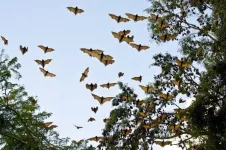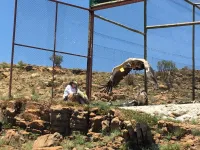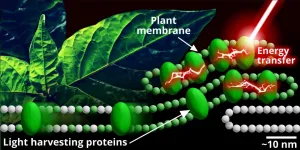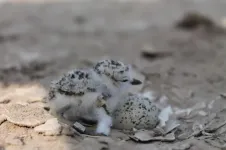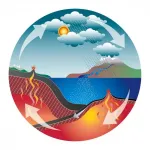(Press-News.org) CABI scientist Dr Arne Witt has shared his expertise on invasive alien plant species as part of a new paper which argues that healthy ecosystems are vital in reducing the risk of future pandemics - such as coronaviruses (including COVID-19) - that threaten human health.
The paper - 'Land use-induced spillover: priority actions for protected and conserved area managers' - is published as part of a special issue by the journal PARKS entitled 'COVID-19 and Protected Areas: Essential Reading for a World Haunted by a Pandemic.'
Lead author Dr Jamie K. Reaser - along with a team of researchers from institutions including the African Wildlife Foundation, the University of Oklahoma and the IUCN World Commission on Protected Areas - recommend practices to reduce the risk of future pandemics through 'protected and conserved area management.'
They rightly state that pandemic prevention 'requires that human health be regarded as an ecological service' and call upon multi-lateral conservation frameworks to recognise that 'protected area managers are in the frontline of public health safety.'
The scientists highlight that land use change 'drives the emergence and spread of micro-organisms (pathogens) that infest wildlife and humans with severe consequences for environmental, animal and human health.'
The authors underscore the fact that "The COVID-19 pandemic, caused by the SARS-CoV-2 virus, demonstrates society's inability to respond it a timely manner to novel pathogens. The result is mass human suffering and mortality, bringing substantial moral, ethical and economic dilemmas."
"A protected and conserved areas are the most widely used approaches to securing species and ecological integrity, they have a crucial role to play in safeguarding public health."
"From our perspective, a 'healthy' ecosystem is one in which wildlife-pathogen interactions are in balance, wildlife are not overly stressed or concentrated together by land use-induced changes."
The scientists say that the strategic removal of invasive alien plants, that support populations of zoonotic pathogens, vectors or hosts, can function as an ecological countermeasure.
Dr Witt said, "In Mauritius, for example, invasive alien plants have reduced the habitat quality of the Mauritian flying fox (Pteropus niger), resulting in increased foraging in agricultural lands and urban environments."
"Krivek et al. (2020) showed that non-native plant invasions reduced native fruit production and that weeded forests provide a better habitat for flying foxes. They conclude that their study lends support to invasive alien plant control as a management strategy in mitigating human-wildlife conflicts."
Dr Reaser and the team of researchers put forward a series of proposals that reinforce existing conservation strategies while 'elevating biodiversity conservation as a priority health measure.'
The proposals include conducting surveillance about the occurrence of pathogens, or their clinical diseases, in animal or human populations as well as fostering 'landscape immunity' in conserved and protected areas. The latter of which can be achieved, the scientists suggest, by measures including not disturbing landscapes and 'retaining a full complement of native species and their inter-relationships.'
Dr Reaser and her colleagues conclude by arguing that, "Nations can no longer treat conservation as a second order priority. COVID-19 shows that we should now recognise that protected areas are at the frontline of public health infrastructure and that their managers are vital to disease prevention."
"Looking ahead, we have to conserve nature as if our lives depended on it."
INFORMATION:
Full paper reference
Reaser, J. K., G. M. Tabor, D. J. Becker, P. Muruthi, A. Witt, S. J. Woodley, M. Ruiz-Aravena, J. A. Patz, V. Hickey, P. J. Hudson, H. Locke, and R. K. Plowright. 'Land use-induced spillover: priority actions for protected and conserved area managers', 11 March 2021, PARKS, 27, Special Issue, 161-178. DOI: 10.2305/IUCN.CH.2021.PARKS-27-SUKR.en
The paper can be read as part of the special issue of the journal PARKS - 'COVID-19 and Protected Areas: Essential Reading for a World Haunted by a Pandemic' here: https://parksjournal.com/
Exposure to SARS-Co-V2, the virus that causes COVID-19, can put otherwise healthy children and adolescents at risk for Multisystem Inflammatory Syndrome in Children (MIS-C), a rare but possibly life-threatening pediatric condition that can cause severe inflammation in organs like the heart, brain, lungs, kidneys and gastrointestinal system.
Diagnosing and treating MIS-C -- which has affected 2,600 children since May 2020 and is known to occur in children who have tested positive for SARS-Co-V2 or been exposed to someone with COVID-19 -- is difficult because respiratory and gastrointestinal symptoms can be similar to severe COVID-19. Other features of MIS-C are very similar to Kawasaki disease, which causes inflammation ...
Rare earth elements are the gold of the 21st century: rare and highly prized all over the world. Most known and economically viable sources of rare earths are located in China, where more than 80 percent of them are refined. This has resulted in a near monopoly situation, with China dominating international trade, particularly in heavy rare earths. Geologists and materials scientists at FAU have now discovered a new way of finding new and previously unknown deposits of rare earths, or rare earth metals, worldwide. They have published the findings of their study in the journal Geology.
Rare earth metals are irreplaceable for manufacturing advanced high-tech industrial products due to their luminescent and ...
Conservationists who apply wing tags for identifying Cape Vultures--a species of African vulture that is vulnerable to extinction--are putting the birds' lives further at risk, a new movement ecology study has shown. Researchers from the Max Planck Institute of Animal Behavior in Germany and VulPro NPC in South Africa have demonstrated that Cape Vultures fitted with tags on their wings travelled shorter distances and flew slower than those fitted with bands around their legs. The research emphasises the importance of investigating the effects that tagging methods can have on the behaviour and conservation of species, prompting a shift towards the ...
New scientific techniques are revealing the intricate role that proteins play in photosynthesis.
Despite being discovered almost 300 years ago, photosynthesis still holds many unanswered questions for science, particularly the way that proteins organise themselves to convert sunlight into chemical energy and at the same time, protect plants from too much sunlight.
Now a collaboration between researchers at the University of Leeds and Kobe University in Japan is developing a novel approach to the investigation of photosynthesis.
Using hybrid membranes that mimic natural plant membranes and advanced microscopes, they are opening photosynthesis to nanoscale investigation - the study of life at less than one billionth ...
In snowy plovers, females have overcome traditional family stereotypes. They often abandon the family to begin a clutch with a new partner whereas the males continue to care for their young until they are independent. An international team led by scientists from the Max Planck Institute for Ornithology in Seewiesen, Germany, has now investigated the decision-making process that determines the duration of parental care by females. They found that offspring desertion often occurs either under poor environmental conditions, when chicks die despite being cared for by both parents, ...
To highlight tumours in the body for cancer diagnosis, doctors can use tiny optical probes (nanoprobes) that light up when they attach to tumours. These nanoprobes allow doctors to detect the location, shape and size of cancers in the body.
Most nanoprobes are fluorescent; they absorb light of a specific colour, like blue and then emit back light of a different colour, like green. However, as tissues of the human body can emit light as well, distinguishing the nanoprobe light from the background light can be tough and could lead to the wrong interpretation.
Now, researchers at Imperial College London have developed new nanoprobes, named bioharmonophores and patented at Imperial, ...
About 1.8 million envenoming snakebites occur around the world annually, killing about 94,000 people. In tropical areas, especially in Southeast Asia and Sub-Saharan Africa, snakebites are considered a major cause of death, especially among farmers who encounter snakes in their fields. In response, the World Health Organization has launched a strategic plan to reduce snakebites by 50% by 2030. An important basis for attaining this goal is expanding relevant scientific research.
An international research group, including researchers from Tel Aviv University, has recently created an innovative simulation model for predicting snakebites, based on an improved ...
A rare disease first identified in 2020 is much more common than first thought, say researchers at the University of Leeds investigating its origins.
VEXAS syndrome is a serious inflammatory condition which develops in men over 50, causing them to become very sick and fatigued, and can be fatal. It was originally thought to be rare, but a new study has identified genetic mutations which indicate that the disease is actually much more common.
The researchers developed a genetic test to identify patients who may have the disease, and now want to screen more people showing symptoms to understand exactly how common it is.
VEXAS syndrome causes unexplained fevers, painful skin rashes and affects the bone ...
The conditions on Earth are ideal for life. Most places on our planet are neither too hot nor too cold and offer liquid water. These and other requirements for life, however, delicately depend on the right composition of the atmosphere. Too little or too much of certain gases - like carbon dioxide - and Earth could become a ball of ice or turn into a pressure cooker. When scientists look for potentially habitable planets, a key component is therefore their atmosphere.
Sometimes, that atmosphere is primitive and largely consists of the gases that were around when the planet formed - as is the case for Jupiter and Saturn. On terrestrial planets like Mars, Venus or Earth, however, such primitive atmospheres are lost. Instead, their remaining atmospheres are strongly influenced ...
COLUMBUS, Ohio - Electric stimulation may be able to help blood vessels carry white blood cells and oxygen to wounds, speeding healing, a new study suggests.
The study, published in the Royal Society of Chemistry journal Lab on a Chip, found that steady electrical stimulation generates increased permeability across blood vessels, providing new insight into the ways new blood vessels might grow.
The electrical stimulation provided a constant voltage with an accompanying electric current in the presence of fluid flow. The findings indicate that stimulation increases ...
